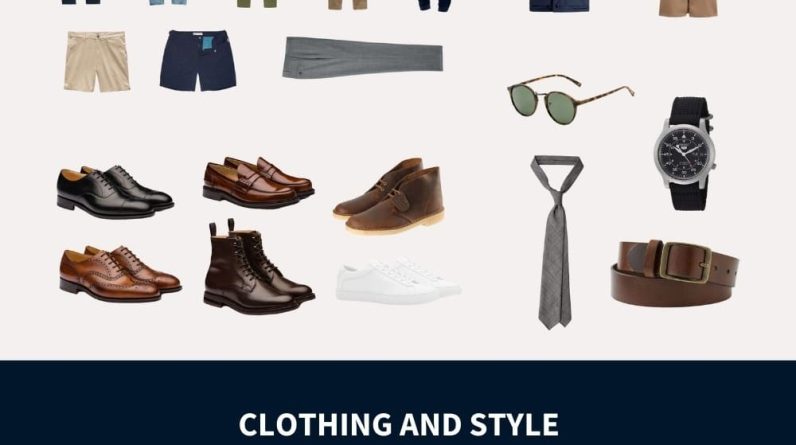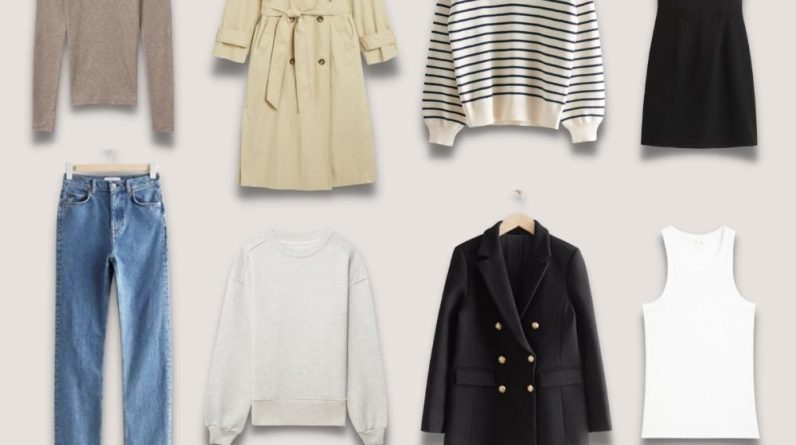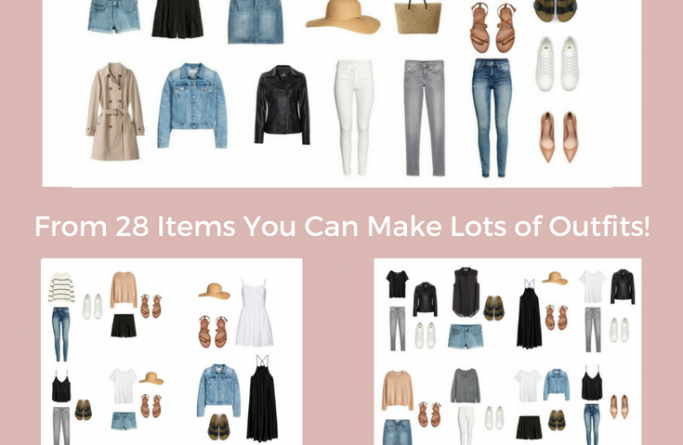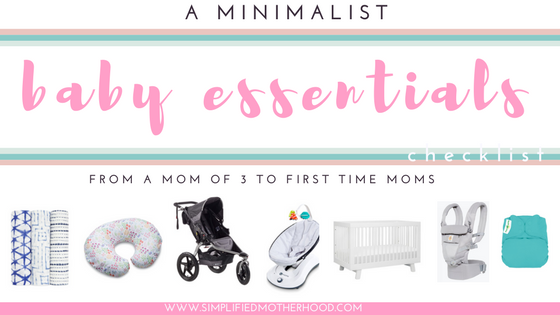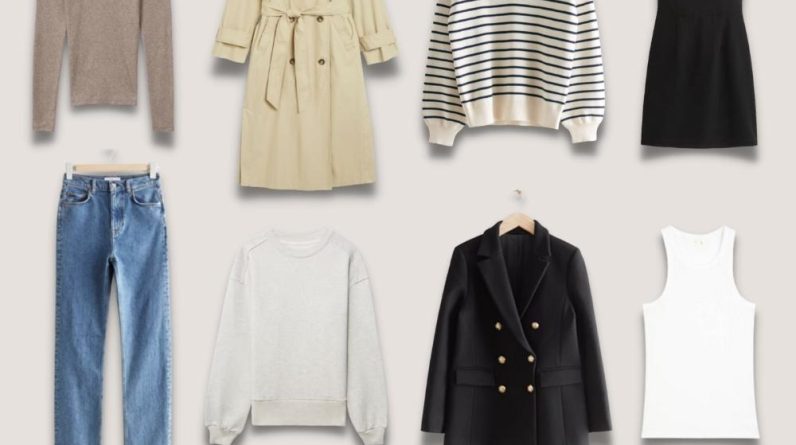
When it comes to your wardrobe, less is often more. If you’ve ever found yourself standing in front of a closet full of clothes, but with nothing to wear, it might be time to consider embracing the minimalist lifestyle. Building a minimalist wardrobe can not only simplify your daily routine, but also help you cultivate a sense of personal style that is timeless and versatile. In this ultimate guide, you will discover the essential pieces needed to create a minimalist wardrobe that reflects your unique personality and makes getting dressed a breeze. From classic basics to key accessories, we’ve got you covered on your journey to a more streamlined and stylish closet.
Table of Contents
Determining Your Style
Discover Your Personal Style
When it comes to building a minimalist wardrobe, understanding your personal style is essential. Take some time to explore your preferences and consider what truly resonates with you. Look through fashion magazines, browse websites, and save images of outfits that catch your eye. This will help you identify patterns and preferences in terms of colors, silhouettes, and overall aesthetics. Remember, your style should be a reflection of your personality and what makes you feel confident and comfortable.
Identify Key Elements of Minimalist Style
Minimalist style is known for its simplicity, clean lines, and timeless elegance. To incorporate this style into your wardrobe, focus on key elements such as neutral colors, classic silhouettes, and high-quality fabrics. Minimalism is all about quality over quantity, so opt for pieces that are versatile and can be mixed and matched effortlessly. A minimalist wardrobe is all about decluttering and curating a collection of items that truly serve you and make you feel amazing.
Consider Your Lifestyle and Needs
While it’s important to have a personal style, it’s equally important to consider your lifestyle and specific needs when building a minimalist wardrobe. Think about the activities you engage in regularly, whether it’s a professional office environment, a casual social scene, or an active lifestyle. This will help you determine the types of clothing items you need to have in your wardrobe. Consider factors like climate, dress codes, and any special occasions you may need to dress up for. Your wardrobe should support your lifestyle and make getting dressed each day a breeze.
Assessing Your Current Wardrobe
Take Inventory
Before you dive into building your minimalist wardrobe, it’s important to assess what you already have in your closet. Take the time to go through each item and evaluate its usefulness and relevance to your style and lifestyle. Make a list of the items that you love and wear frequently, as well as those that are rarely or never worn. This will give you a clear picture of what you already own and what you may need to add or remove from your wardrobe.
Eliminate Unnecessary Items
Once you’ve taken inventory, it’s time to declutter and eliminate unnecessary items from your wardrobe. Be honest with yourself and let go of pieces that no longer fit, are damaged beyond repair, or simply don’t align with your personal style. Consider donating or selling items that are in good condition but no longer serve you. Removing clutter from your wardrobe will make it easier to see and appreciate the pieces that truly matter and make getting dressed each day a more enjoyable experience.
Identify Staple Pieces
As you declutter, take note of the staple pieces that remain in your wardrobe. These are the timeless, versatile items that form the foundation of a minimalist wardrobe. Staple pieces may include classic white button-down shirts, well-fitting jeans, tailored blazers, and little black dresses, among others. These are the items that can be dressed up or down and can be easily mixed and matched with other pieces in your wardrobe. Identifying your staple pieces will help guide you in building a cohesive and functional minimalist wardrobe.

This image is property of modernminimalism.com.
Investing in Quality Basics
Choose High-Quality Fabrics
When building a minimalist wardrobe, quality should be a top priority. Invest in clothing made from high-quality fabrics that will stand the test of time. Look for natural fibers like cotton, linen, silk, and wool, as they are durable and have a luxurious feel. These fabrics also tend to age gracefully and become even more comfortable over time. Avoid synthetic materials that are prone to pilling and wear out quickly. By choosing quality fabrics, you’ll not only reduce your environmental impact but also ensure that your wardrobe lasts for years to come.
Opt for Versatile Colors
When selecting clothing for your minimalist wardrobe, opt for versatile colors that can easily be mixed and matched. Neutral colors like black, white, gray, and navy are timeless and can serve as the foundation of your wardrobe. They provide a blank canvas for adding pops of color through accessories or statement pieces. Neutral colors are also versatile in terms of styling, allowing you to create both casual and formal looks effortlessly. By choosing versatile colors, you’ll maximize the number of outfit combinations you can create with a minimal number of garments.
Prioritize Fit and Comfort
No matter how stylish a garment may be, if it doesn’t fit properly or isn’t comfortable, it won’t be a valuable addition to your minimalist wardrobe. When shopping for basics, prioritize items that fit well and flatter your body shape. Pay attention to details like shoulder seams, sleeve lengths, and waistlines to ensure a proper fit. Additionally, consider the comfort and functionality of each piece. Look for clothing with stretch or adjustable features that will allow you to move and feel at ease throughout the day. Comfort and fit are crucial in ensuring that you feel confident and comfortable in your minimalist wardrobe.
Building a Capsule Wardrobe
Define Your Capsule Wardrobe Size
A capsule wardrobe is a curated collection of essential pieces that can be mixed and matched to create a variety of outfits. The size of your capsule wardrobe will largely depend on your individual needs and preferences. Some may prefer a smaller capsule wardrobe of 30-40 items, while others may opt for a larger capsule wardrobe of 50-60 items. Consider factors like the climate you live in, the variety of activities you engage in, and your personal style when determining the size of your capsule wardrobe. It’s essential to strike a balance between having enough options and keeping your wardrobe streamlined and manageable.
Select Core Pieces
The core pieces of your capsule wardrobe are the foundation on which you build your outfits. These are the versatile, timeless items that you can rely on season after season. Start by selecting core pieces such as basic tops, well-fitting pants or skirts, and layering pieces like cardigans or blazers. Choose items that can be easily mixed and matched and can transition seamlessly from day to night. Each core piece should be able to work with multiple outfits, maximizing the number of options you have without overcrowding your wardrobe.
Add Seasonal items
While core pieces provide the backbone of your capsule wardrobe, seasonal items add variety and adaptability. These are the pieces that reflect current trends and can be swapped in and out depending on the time of the year. Consider adding seasonal items like lightweight dresses or shorts for summer, cozy sweaters or coats for winter, and transitional pieces like layered tops or lightweight jackets for spring and fall. By incorporating seasonal items into your capsule wardrobe, you’ll ensure that your style remains fresh and updated without sacrificing the simplicity and functionality of a minimalist wardrobe.

This image is property of modernminimalism.com.
Creating a Cohesive Color Palette
Opt for Neutrals
When it comes to creating a cohesive color palette for your minimalist wardrobe, neutrals are your best friend. Neutrals like black, white, gray, and beige provide a timeless and versatile base for any outfit. They create a harmonious, cohesive look when combined and can be paired with accent colors or statement pieces to add visual interest. Neutrals also make it easier to mix and match items in your wardrobe, as they tend to complement each other effortlessly. By opting for neutrals, you’ll create a wardrobe that is effortlessly chic and adaptable to various occasions.
Add a Few Statement Colors
While neutrals form the foundation of a minimalist wardrobe, adding a few statement colors can elevate your outfits and reflect your personal style. Choose a color or two that you love and that complements your skin tone and incorporate them into your wardrobe through tops, dresses, or accessories. These statement colors can provide a pop of vibrancy and personality to otherwise neutral outfits. Just be mindful not to go overboard with too many statement colors, as this can make it more challenging to create cohesive and versatile outfits.
Ensure Color Harmony
When building a cohesive color palette, it’s important to ensure that the colors you choose harmonize well together. Pay attention to the undertones of your chosen colors, as this will affect how they look when combined. For example, if you prefer warm tones, opt for neutrals with warm undertones like beige or cream, and complement them with warm accent colors like mustard yellow or burnt orange. Similarly, if you prefer cool tones, choose neutrals with cool undertones like gray or navy, and pair them with cool accent colors like mint green or icy blue. By creating a color palette with harmonious undertones, you’ll ensure that your outfits look polished and well put together.
Mixing and Matching
Experiment with Different Combinations
One of the joys of a minimalist wardrobe is the endless possibilities for mixing and matching different pieces to create new outfits. Take the time to experiment with different combinations and pairings to discover unexpected outfit combinations. Mix different textures, patterns, and proportions to add visual interest and create a unique look each time. Don’t be afraid to step outside your comfort zone and try new combinations – you may be pleasantly surprised by the results. Mixing and matching is not only fun but also allows you to get the most out of your wardrobe and showcase your personal style.
Layering Techniques
Layering is a key technique that can add depth and versatility to your outfits, especially during transitional seasons. Experiment with layering pieces like cardigans, blazers, and lightweight jackets over basic tops or dresses to create dimension and visual interest. Play with different lengths and silhouettes to find combinations that flatter your body shape. Layering not only adds warmth but also allows you to extend the wearability of your wardrobe, making it suitable for different weather conditions and occasions.
Accessorizing for Variety
Accessories are a powerful tool when it comes to elevating your minimalist outfits and adding variety. They can transform a simple outfit into a statement look and reflect your personality. Experiment with different accessories like scarves, belts, statement jewelry, and handbags to enhance your outfits. Accessories also provide a cost-effective way to update your wardrobe without adding more clothing items. By investing in a few key accessories, you can create a wide range of looks and express your personal style in a unique way.
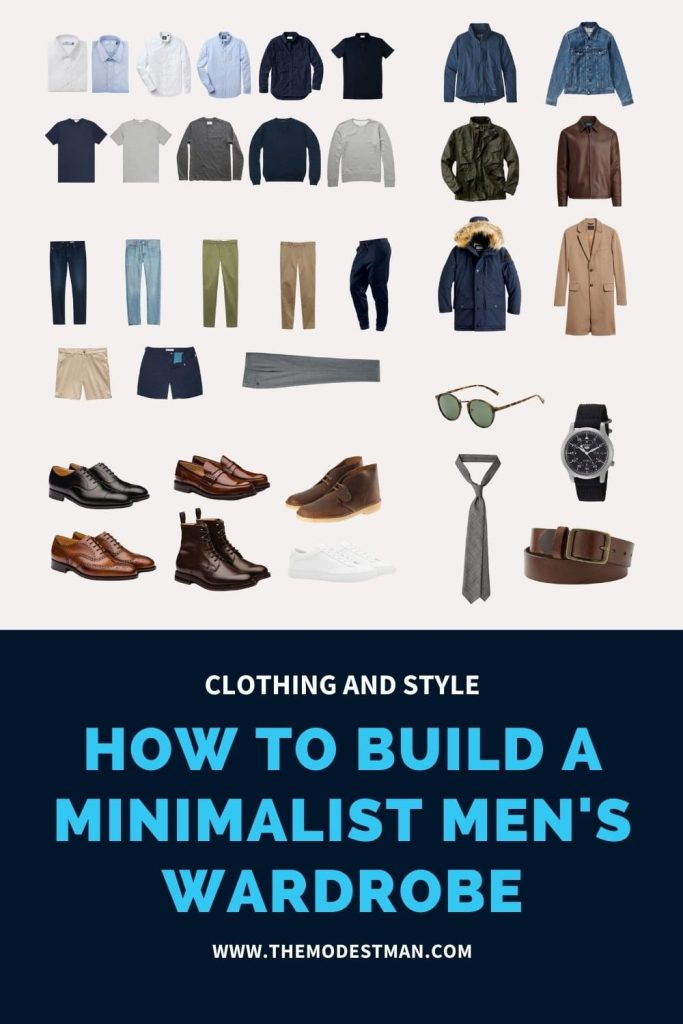
This image is property of www.themodestman.com.
Considering Sustainable Fashion
Research Ethical Brands
As sustainability increasingly becomes a focus in the fashion industry, it’s important to support brands that are committed to ethical practices. Research and discover brands that prioritize fair labor conditions, sustainable materials, and transparent supply chains. Look for certifications like Fair Trade or GOTS (Global Organic Textile Standard) to ensure that the brands you choose align with your values. By supporting ethical brands, you can have peace of mind knowing that your wardrobe is not contributing to harmful environmental or social impacts.
Choose Sustainable Fabrics
Another way to build a sustainable wardrobe is to choose clothing made from eco-friendly materials. Sustainable fabrics include organic cotton, bamboo, hemp, linen, and Tencel. These materials are produced using fewer chemicals, water, and energy, making them more environmentally friendly than conventional fabrics. Additionally, they tend to be more durable and have a lower impact on the planet throughout their life cycle. By opting for sustainable fabrics, you’ll not only reduce your environmental footprint but also enjoy clothing that is comfortable, breathable, and of high quality.
Shop Secondhand
One of the most sustainable ways to build a minimalist wardrobe is by shopping secondhand. Thrift stores, consignment shops, and online platforms offer a wide variety of gently used clothing at a fraction of the original cost. Shopping secondhand not only reduces clothing waste but also allows you to find unique and one-of-a-kind pieces that add character to your wardrobe. Embrace the thrill of the hunt and enjoy the satisfaction of giving pre-loved items a new home. By shopping secondhand, you’ll contribute to a circular fashion economy and make a positive impact on the environment.
Organizing Your Minimalist Wardrobe
Invest in Functional Storage
To maintain a minimalist wardrobe, investing in functional storage solutions is crucial. Look for storage options that maximize space and keep your clothing organized and easily accessible. Consider using closet organizers, hanging shelves, and drawer dividers to create designated spaces for different types of clothing. Use clear storage bins or garment bags to protect seasonal items when they’re not in use. By investing in functional storage, you’ll save time and energy when getting dressed and ensure that your clothing remains in good condition.
Utilize Space-Saving Techniques
In a minimalist wardrobe, optimizing space is essential. Utilize space-saving techniques to make the most of your storage areas. For example, roll your clothes instead of folding them to maximize drawer space and prevent wrinkles. Use slim hangers to create more hanging space in your closet. Make use of vertical space by installing hooks or racks on walls or the back of doors to hang bags, scarves, or belts. Organization is key to maintaining a minimalist wardrobe, and making the most of your available space will help keep everything in order and easily accessible.
Maintain an Orderly System
Once you’ve organized your minimalist wardrobe, it’s important to maintain an orderly system to prevent clutter from creeping back in. Dedicate a specific place for each item and make a habit of returning items to their designated spots after each use. Regularly review your wardrobe and assess whether any items need to be relocated, repaired, or removed. By maintaining an orderly system, you’ll not only save time and frustration when getting dressed but also ensure that your minimalist wardrobe remains clutter-free and functional.

This image is property of www.stylebysavina.com.
Building a Minimalist Shoe Collection
Focus on Versatility
When it comes to building a minimalist shoe collection, focus on versatility. Choose shoes that can be worn with multiple outfits and for various occasions. Opt for classic styles like black or nude pumps, ankle boots, white sneakers, and simple flats. These are the types of shoes that can easily transition from day to night and complement different clothing styles. By selecting versatile footwear, you’ll have fewer shoes in your collection while still having options to suit different outfits and situations.
Invest in Quality Footwear
Quality is crucial when it comes to shoes, as they need to withstand daily wear and tear. Invest in well-constructed shoes made from durable materials like leather or suede. Look for shoes with good arch support and cushioning to ensure comfort throughout the day. Pay attention to details like stitching, soles, and hardware to ensure the longevity of your footwear. While quality shoes may come with a higher price tag, they will last longer, saving you money in the long run and contributing to a more sustainable consumption pattern.
Consider Different Types of Shoes
A minimalist shoe collection should include a variety of shoe types to cater to different outfits and occasions. Consider including shoes like loafers, sandals, ballet flats, and statement heels in addition to the basics. Loafers and sandals are perfect for warm weather and can be dressed up or down. Ballet flats are timeless and versatile, while statement heels can add flair to an otherwise simple outfit. By considering different types of shoes, you’ll ensure that you have the appropriate footwear for any occasion while maintaining a minimalist and functional wardrobe.
Extending the Life of Your Wardrobe
Proper Care and Maintenance
To extend the life of your minimalist wardrobe, proper care and maintenance are essential. Follow garment care instructions carefully, including washing, dry cleaning, and ironing guidelines. Store clothes properly to prevent damage from moths or moisture. Mend minor repairs promptly to prevent further damage and ensure that your clothing stays in good condition. By taking care of your wardrobe, you’ll be able to enjoy it for longer and reduce the need for frequent replacements.
Repair and Alteration
Instead of discarding garments at the first sign of wear and tear, consider repairing or altering them to extend their life. Learn basic sewing skills to mend small holes, replace buttons, or fix loose hems. If a garment no longer fits properly, have it altered by a professional tailor to ensure a perfect fit. Sometimes a simple alteration can transform a neglected piece into a wardrobe favorite. By repairing and altering your clothing, you’ll not only save money but also reduce waste and contribute to a more sustainable wardrobe.
Pay Attention to Washing Guidelines
One of the most common causes of clothing deterioration is improper washing. Pay attention to the washing guidelines on your clothing tags and follow them closely. Separate your laundry into different loads based on color, fabric type, and washing instructions. Use gentle detergents and avoid harsh chemicals that can damage fabrics. Consider washing your clothes in cold water to conserve energy and prevent color fading. By following the proper washing guidelines, you’ll preserve the quality of your clothing and enjoy them for longer.
Building a minimalist wardrobe is a journey that requires time, patience, and thoughtful consideration. By determining your style, assessing your current wardrobe, investing in quality basics, and creating a cohesive color palette, you’ll be on your way to building a functional and sustainable wardrobe. Remember to mix and match, consider sustainable fashion options, and organize your wardrobe effectively. By extending the life of your clothing through proper care and maintenance, you’ll ensure that your minimalist wardrobe serves you well for years to come.

This image is property of styleyouroccasion.com.


